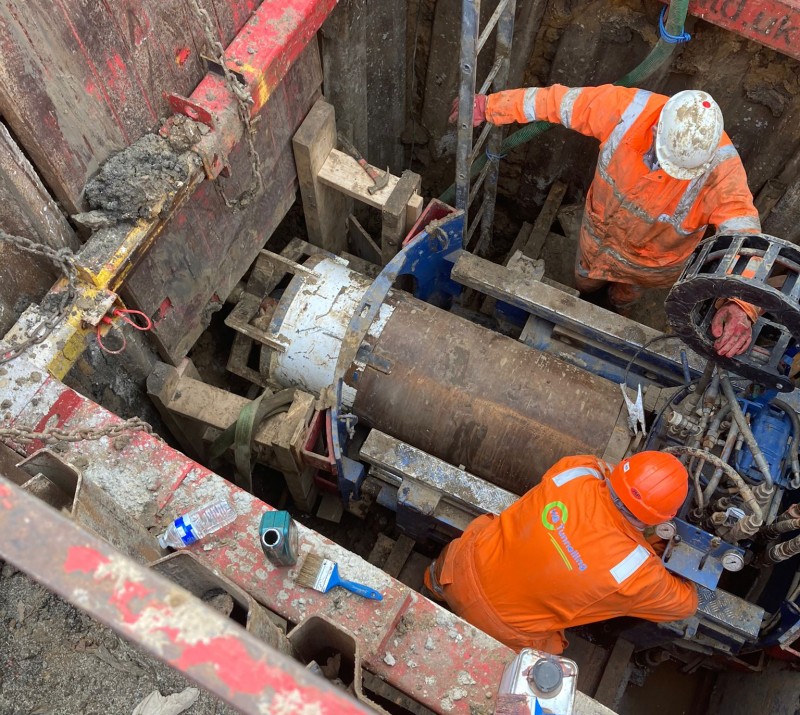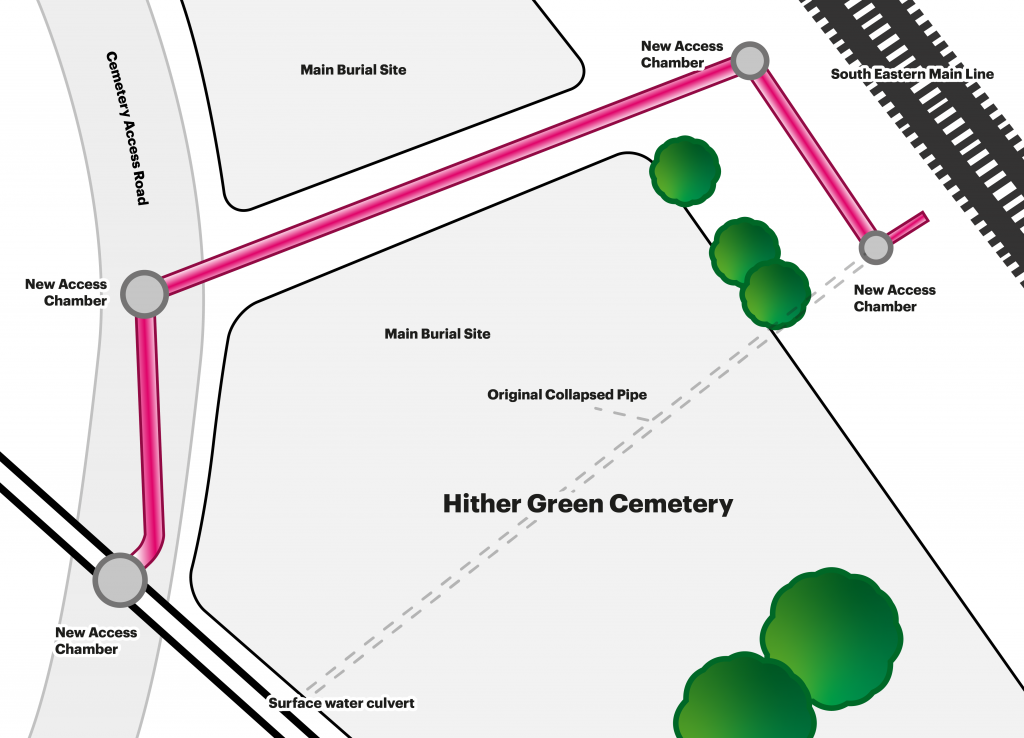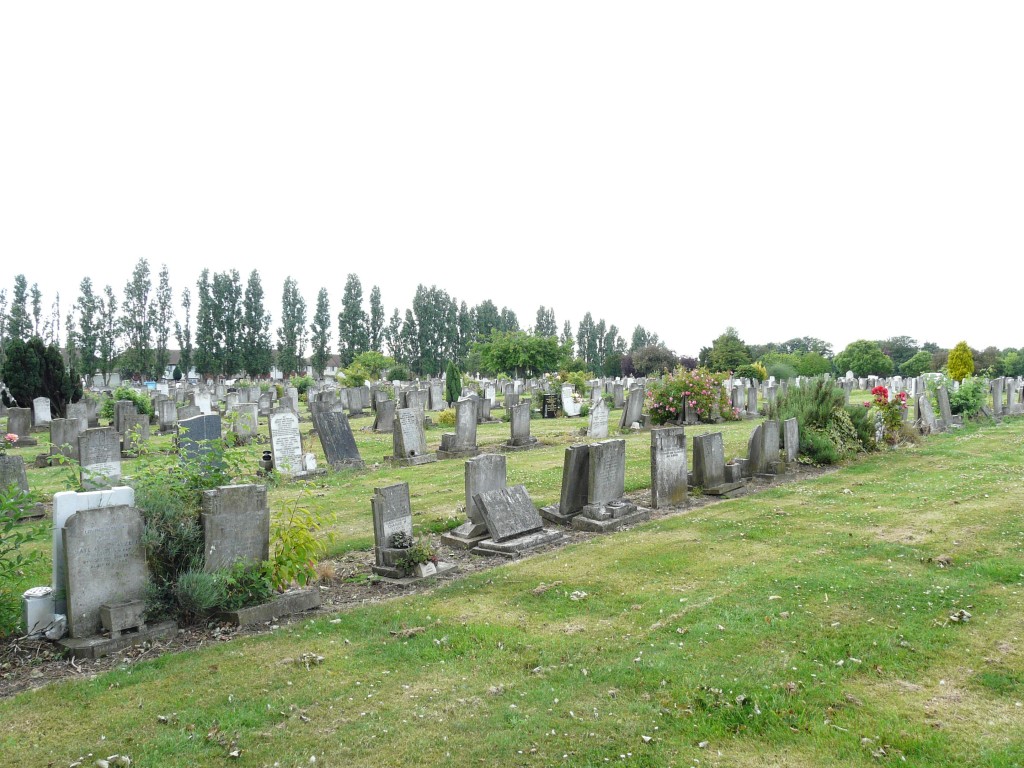Rail drainage pipe gets re-routed through cemetery

Engineers at Lanes Group plc have completed a sensitive project to install a new drainage pipe beneath one of London’s largest cemeteries.
They carried out investigations and planned the installation of the 50-metre-long concrete pipe beneath Hither Green Cemetery in Lewisham, south London.
The 50-metre-long concrete pipe was needed to connect track drains along the South Eastern Main Line to a Thames Water surface water culvert.
Protecting graves
The original 300mm diameter clay pipe serving the track drains had collapsed. Early investigations showed a new pipe had to follow a different route to minimise the risk of graves being disturbed.
Network Rail commissioned Lanes Professional Services and sister company UKDN Waterflow (LG) to work together on the project.
Their task was to carry out a study to establish how best to restore the drainage and then to support a specialist contractor as it installed the new pipe using a trenchless solution called auger boring.

Increased diameter
Head of Lanes Professional Services Andrew McQueen said: “The original pipe was thought to be over 100 years old and the cemetery had developed significantly since it was put in.
“This meant there was a risk of graves being disturbed if a new pipe was installed along the same line.
“Our surveying work identified the best line for the new pipe to take through a less intensively used section of the cemetery nearby.
“The route then took the new pipe back towards the Thames Water culvert, which also runs through the cemetery.
“Its diameter was increased by 50 per cent to ensure it had the capacity needed to cope with the volumes of surface water being generated, not least because climate change is making weather patterns more volatile.”
New chambers
The Lanes team carried out three different investigations – a topographic survey, a ground penetration survey and a buried services survey – to establish the optimum route and depth of the pipe.
A specialist contractor then carried out the auger boring installation, a trenchless solution that does not need extensive ground excavation.
Four new large access chambers were also created above the drainage pipe – two on the railway line, one where the pipe turned under the cemetery, and the other above the culvert – to support effective maintenance.

Serious disruption
Andrew McQueen said: “This was a project with clear sensitivities, and we worked closely with the cemetery management team to ensure the new drainage was located correctly.
“It was important for the pipe to be replaced to allow water from track drains to be channelled away from the railway line.
“Without it, the track bed could become waterlogged and could flood during periods of heavy rain, which would have caused seriously disruption to train services.”
Gothic chapel
Lanes Professional Services provides a wide range of engineering services, including design and consultancy, drainage and hydraulics surveys, laser profiling, and aerial drone (UAV) surveys.
Hither Green Cemetery opened as Lee Cemetery in 1873 and, in its early years, expanded to take in adjacent farmland. It now covers 37 acres.
The cemetery has two gothic chapels and war graves from both the First World War and the Second World War.







